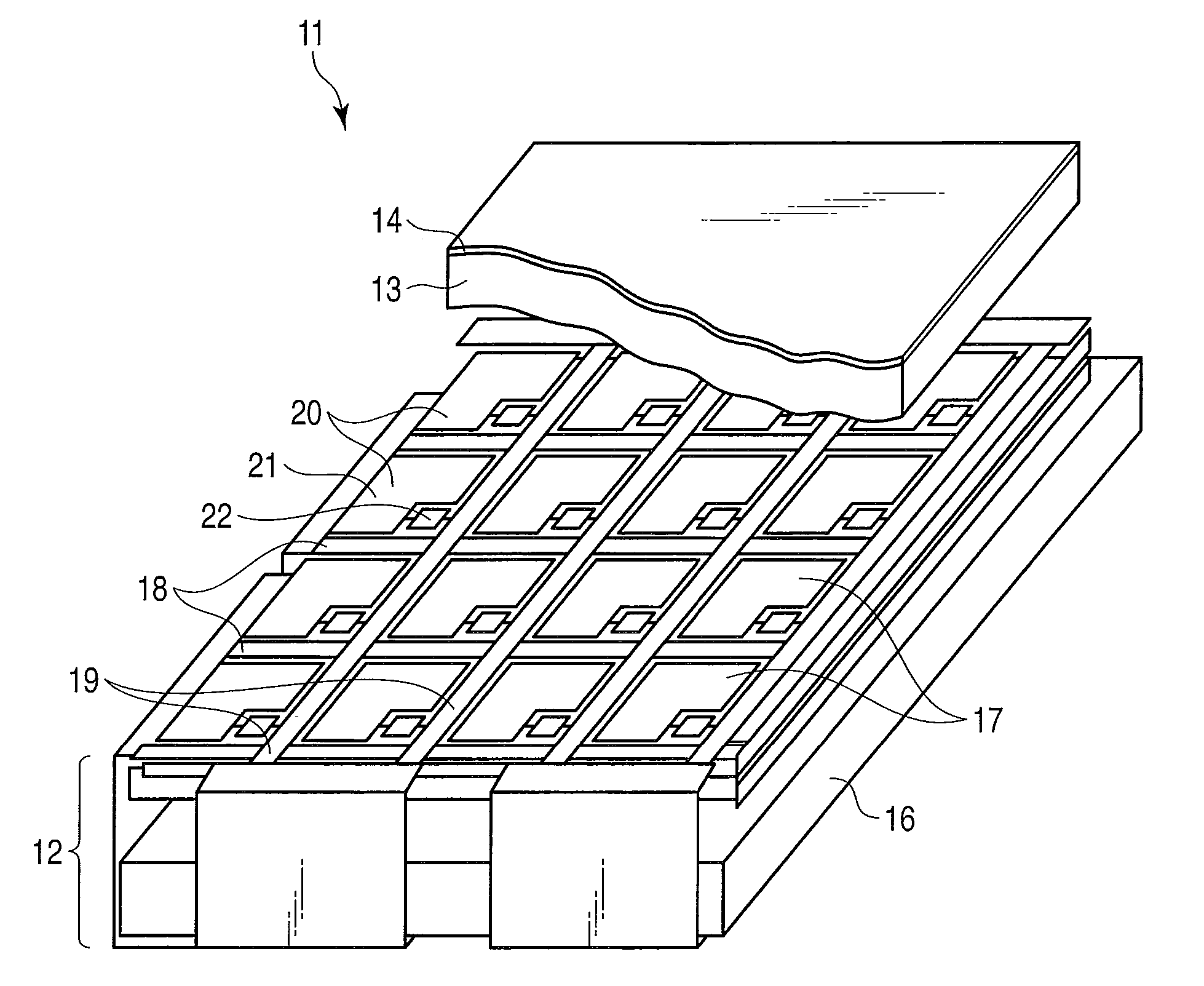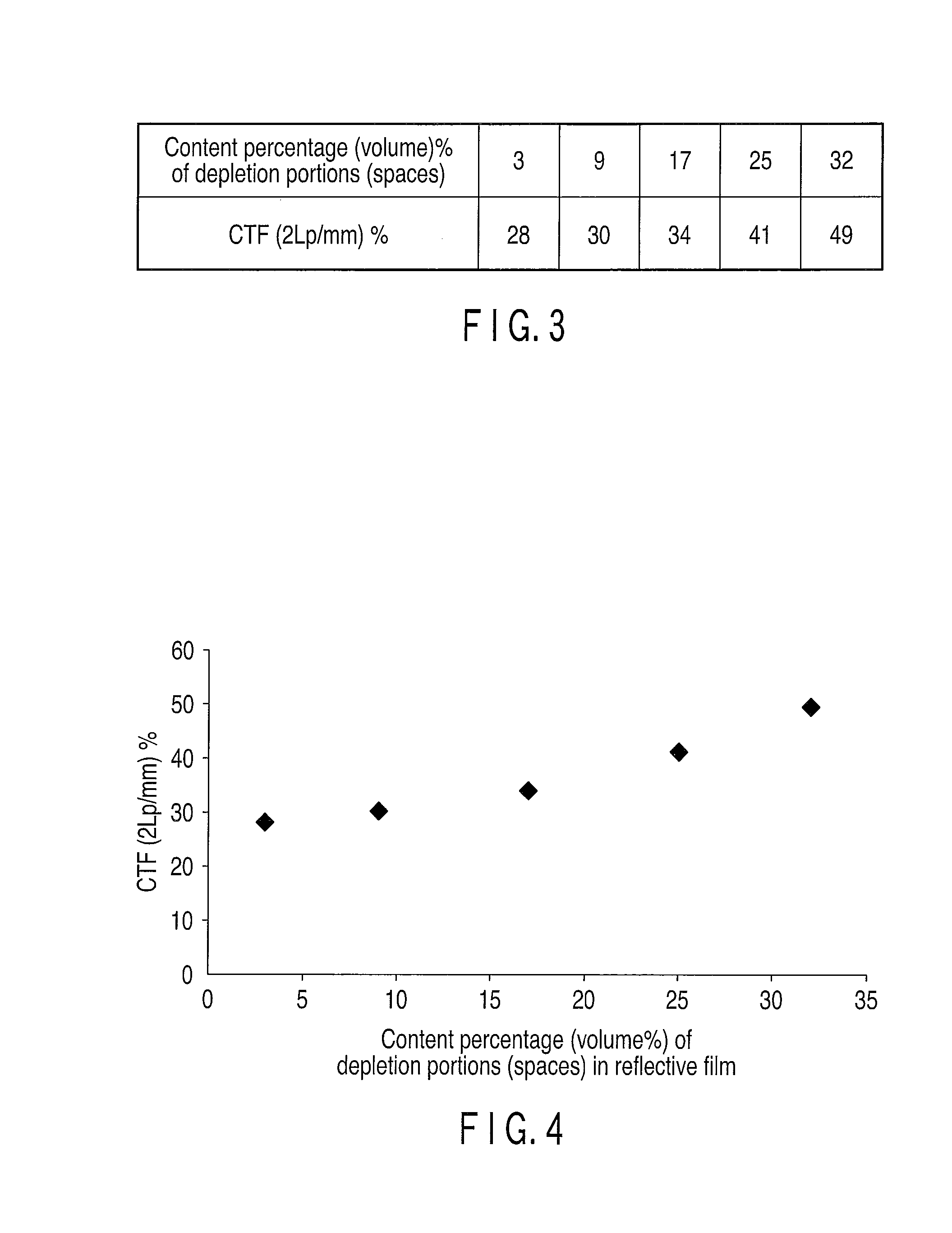Radiation detector and method for manufacturing the same
- Summary
- Abstract
- Description
- Claims
- Application Information
AI Technical Summary
Benefits of technology
Problems solved by technology
Method used
Image
Examples
Embodiment Construction
[0055]Embodiment of the present invention will be described below with reference to the accompanying drawings.
[0056]FIG. 1 is a perspective view of an X-ray detector 11 as a radiation detector, and FIG. 2 is a cross-sectional view of the X-ray detector. The X-ray detector 11 is an X-ray plane sensor for detecting an X-ray image as a radiological image, and is used, for example, for general medical applications. The X-ray detector 11 includes an array substrate 12 functioning as a photoelectric conversion substrate for converting fluorescence to an electrical signal, a scintillation layer 13 that is provided on the front surface, or one main surface, of the array substrate 12 and functions as an X-ray conversion unit for converting incident X-rays to fluorescence, and a reflective film 14 that is provided on the scintillation layer 13 and reflects fluorescence from the scintillation layer 13 toward a side of the array substrate 12. The X-ray detector 11 includes a moisture proof film...
PUM
 Login to View More
Login to View More Abstract
Description
Claims
Application Information
 Login to View More
Login to View More - R&D
- Intellectual Property
- Life Sciences
- Materials
- Tech Scout
- Unparalleled Data Quality
- Higher Quality Content
- 60% Fewer Hallucinations
Browse by: Latest US Patents, China's latest patents, Technical Efficacy Thesaurus, Application Domain, Technology Topic, Popular Technical Reports.
© 2025 PatSnap. All rights reserved.Legal|Privacy policy|Modern Slavery Act Transparency Statement|Sitemap|About US| Contact US: help@patsnap.com



